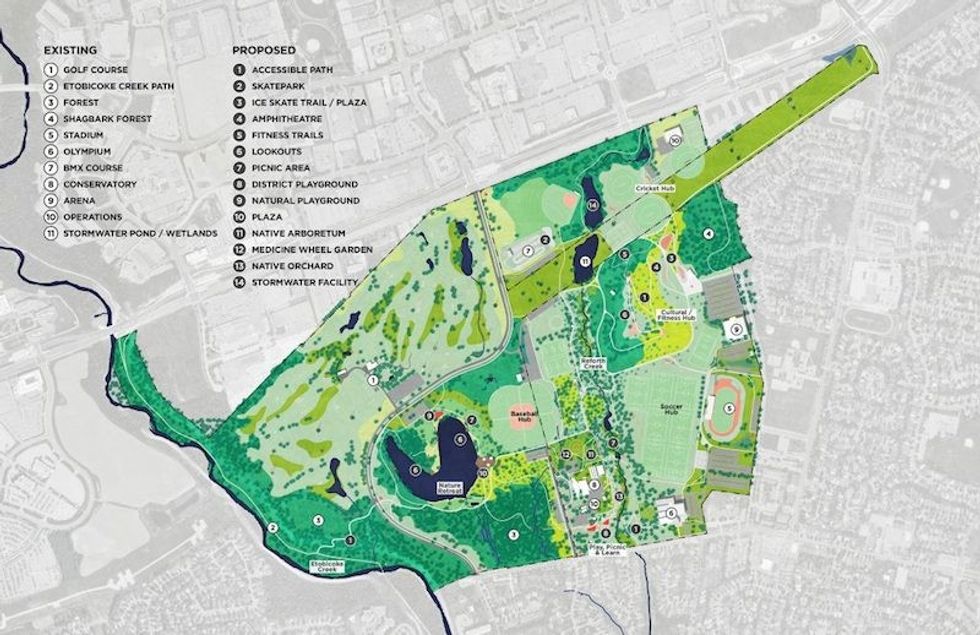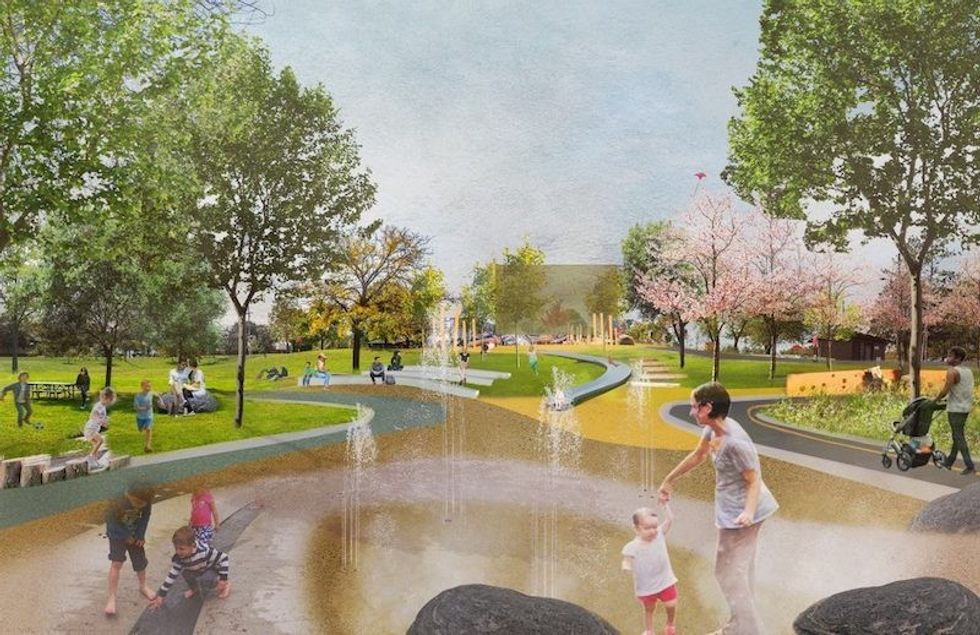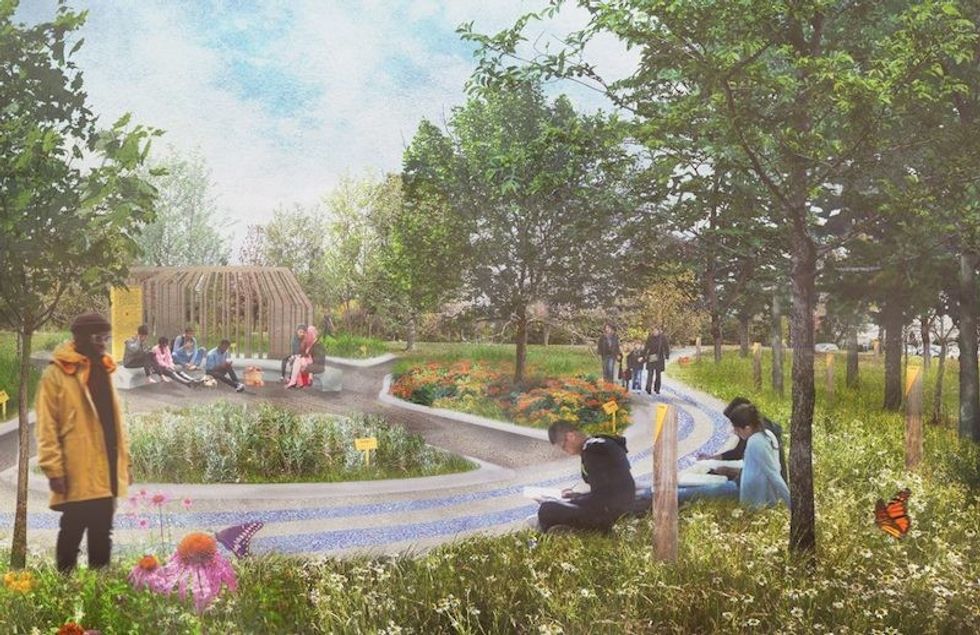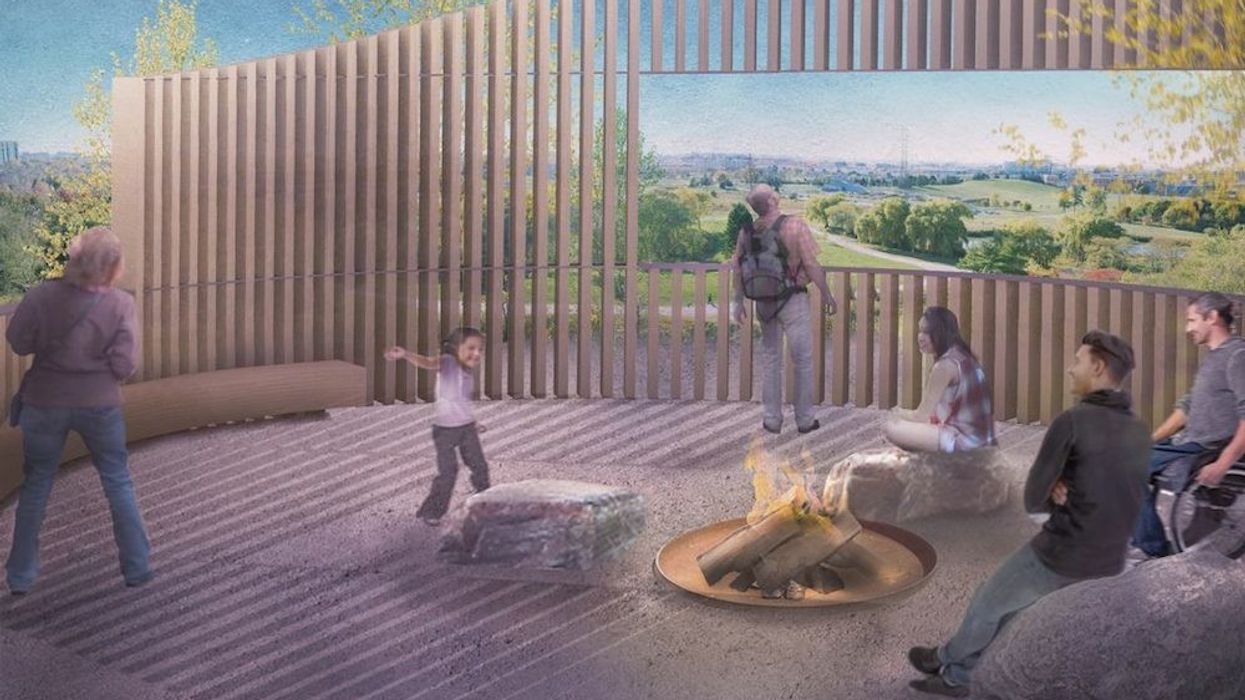There’s a slow and steady makeover in the works for one of the largest parks in the Greater Toronto Area (GTA).
The City recently announced it would update a 2008 Master Plan for Centennial Park to create a new vision that will guide changes in the park over the next 20 years.
With its pristine natural areas, public gathering spaces, and sports facilities, the massive west end park already attracts fresh air-seekers from across the city and has for decades.
The revitalization will improve the park for all demographics, thanks to additions like an accessible new playground area (a small playground currently exists) with a water play component, a skating trail, new park mapping and directional signage, improved access to natural areas and watercourses, upgraded playing fields, and additional picnic areas.
Talking points like art installations, an amphitheatre, and outdoor fitness areas will further enhance the park-going experience.

“The last plan was undertaken in 2008 and this process involved a refresh of that plan, taking into account changes in the park since that time,” says Vanessa Enskaitis, Stakeholder Relations & Issues Management, Parks, Forestry and Recreation, City of Toronto.
“It also provides an opportunity to look at how best to invest in Centennial Park's 526 acres through the lens of the City's Parkland Strategy, the Facility Master Plan, and other initiatives that are currently guiding work in our parks,” she adds.

While the revamped park will undoubtedly be easy-on-the-eyes in the design department, Enskaitis highlights that a master plan is an overall plan that helps guide the way they invest and make changes to the park, so some of the more micro design elements are still in development.
“Much of the more detailed design will come as we look at discrete projects that are implemented after the master plan is complete; the District Play area in the heart of the park is a good example. We'll eventually move into designing this area in detail,” says Enskaitis. “Referencing the Parkland Strategy, the principles of Expand, Improve, Connect, and Include are all key drivers of the work in Centennial Park.”
While improving the park involves revisiting recreational facilities like soccer and baseball field, says Enskaitis, it also involves looking at other key areas: programming and place-making, water and ecology, and accessibility and movement.
“As part of the process, we've also tried to make sure we're engaging with all park users in order to guide this work,” says Enskaitis. “This has included focused sessions with youth and with members of the Indigenous communities – and you'll see specific recommendations as to how we might do more in the park, such as working with Indigenous communities to do more related to Indigenous place-making and place-keeping.”
Enskaitis says that this does not mean immediate implementation of all of these suggested improvements. “These improvements will be implemented over time, as budget allows, and as opportunities arise,” she says. “There will also be additional public consultation as projects are implemented over time.”

At this point, just the prospect of a green space revamp in the GTA – however far from materialization it may be – is music to the ears of its perpetually locked-down and stir crazy residents.
In fact, it comes at a time of a collective realization that we may have even taken these precious green spaces for granted in the past (i.e. pre-pandemic).
"Over the last year, we've seen the importance of access to parks and green space,” says Enskaitis. “At 526 acres, Centennial Park is one of the City's largest parks and as Toronto's population continues to grow, parks like it will play an increasingly important role and we need to make sure we're investing in them wisely."





















